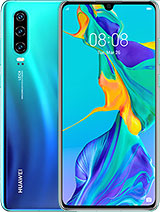Main
Model
Price
Advantages
launch
Announced
Status
platform
OS
Chipset
CPU
GPU
camera
Rear
Front
Video
Features
display
Size
Resolution
Technology
Protection
battery
General
Charging
body
Dimensions
Weight
Build
SIM card
Miscellaneous
Colors
memory
Internal Storage & RAM
Card slot
comms
WLAN
Bluetooth
GPS
NFC
Radio
USB
features
Sensors
sound
3.5mm jack
network
Technology
2G bands
3G bands
4G bands
Speed
GPRS
EDGE
Videos
Summary
The Samsung Galaxy S10 runs a more powerful CPU Octa-core (2x2.73 GHz Mongoose M4 & 2x2.31 GHz Cortex-A75 & 4x1.95 GHz Cortex-A55) than the P30. It is a significant specification of this phone because powerful processor allows the user to run a few apps at once.
The Samsung Galaxy S10 has 4K UHD (1440 x 3040 pixels) screen resolution with 551 ppi pixel density which is more high in compare to the P30 4K UHD (1080 x 2340 pixels) screen resolution with 422 ppi pixel density. It makes this phone a good choice for playing games. The P30 smartphone is easier to carry as it has smaller dimensions in comparison to the Samsung Galaxy S10: 149.1 x 71.4 x 7.6 mm versus 149.9 x 70.4 x 7.8 mm. The Samsung Galaxy S10 model weight 157g which is 8g lighter in compare with the weight of the P30.
The Galaxy S10 model has a memory card slot. It's a nice advantage: you can easily expand memory storage and transfer files. The P30 has a better battery life as it is produced with 3650mah battery which is 250mah bigger compared to the Samsung Galaxy S10 cell. That's mean this phone will work longer without charging.
The Galaxy S10 has 7 advantages and the P30 only 2 so the Galaxy S10 is the best choice. Check the lowest price on Amazon.


